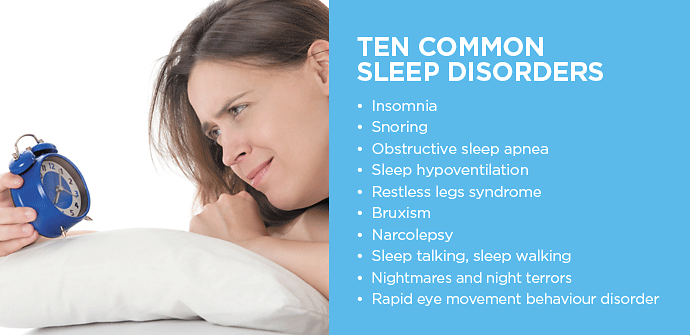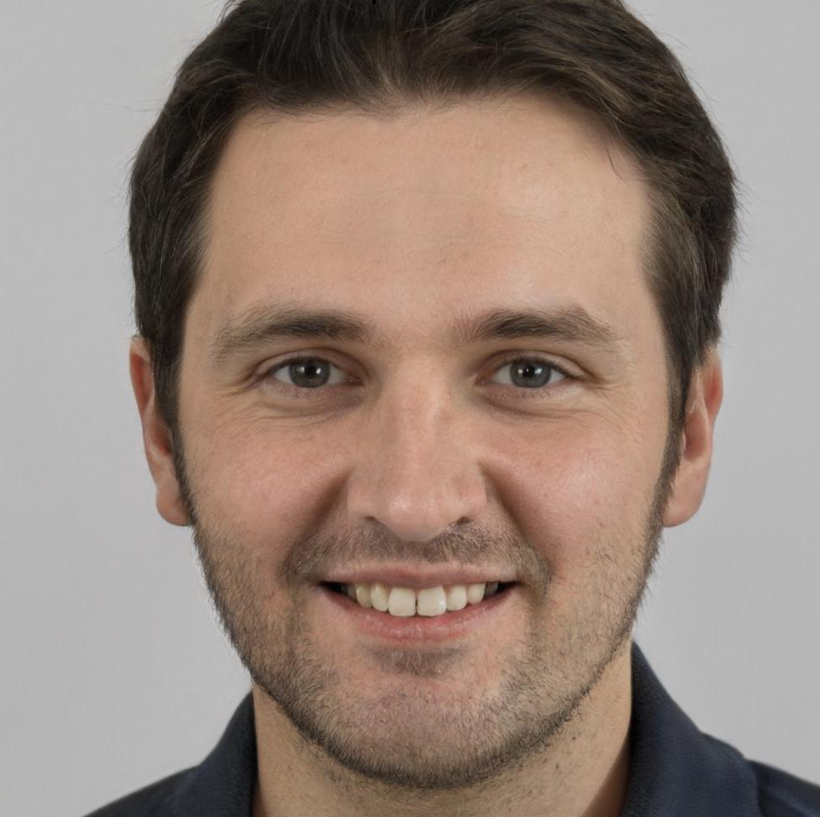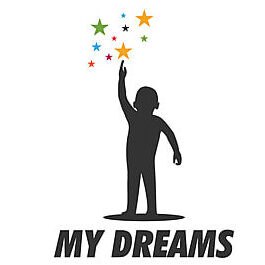Sleep is an essential aspect of human life, influencing physical and mental well-being. However, for many individuals, sleep disorders can disrupt the delicate balance of the sleep-wake cycle. In this article, we will delve into the science of sleep, exploring its stages, underlying neurobiology, and the factors that impact sleep quality. Moreover, we will demystify common sleep disorders like insomnia, sleep apnea, restless leg syndrome (RLS), and narcolepsy, uncovering their causes, symptoms, and available treatment options.
The Science of Sleep
Sleep is a complex process regulated by our internal biological clock, known as the circadian rhythm. The sleep-wake cycle is divided into two main stages: Non-Rapid Eye Movement (NREM) and Rapid Eye Movement (REM) sleep. During NREM sleep, our body enters a state of deep relaxation, promoting physical restoration. On the other hand, REM sleep is associated with vivid dreaming and plays a crucial role in cognitive processes and emotional regulation.
Our sleep is intricately controlled by various brain regions and neurotransmitters. The hypothalamus, in particular, acts as the central command for sleep regulation. Neurotransmitters like serotonin, dopamine, and melatonin also play significant roles in initiating and maintaining sleep.
Several factors influence the quality of our sleep, including environmental cues, lifestyle choices, and emotional well-being. Creating a conducive sleep environment, establishing a consistent sleep schedule, and managing stress are essential for promoting healthy sleep patterns.
Common Sleep Disorders Overview
Sleep disorders can manifest in various forms, affecting millions of people worldwide. Let’s explore some of the most common sleep disorders:
Insomnia
Insomnia is a prevalent sleep disorder characterized by difficulty falling or staying asleep. It can be classified as primary insomnia, which occurs independently, or secondary insomnia, which is associated with other medical or psychological conditions. Insomnia can lead to daytime fatigue, irritability, and impaired cognitive function.
Sleep Apnea
Sleep apnea is a serious sleep disorder characterized by recurrent interruptions in breathing during sleep. The two main types are Obstructive Sleep Apnea (OSA), caused by blocked airways, and Central Sleep Apnea (CSA), resulting from the brain’s failure to send proper signals to the muscles controlling breathing. Sleep apnea can lead to daytime sleepiness, increased risk of cardiovascular problems, and other health issues.
Restless Leg Syndrome (RLS)
RLS is a neurological disorder characterized by an irresistible urge to move the legs, usually during periods of rest or inactivity. This condition can significantly disrupt sleep, leading to daytime fatigue and discomfort.
Narcolepsy
Narcolepsy is a chronic neurological disorder that affects the brain’s ability to regulate sleep-wake cycles. Individuals with narcolepsy experience excessive daytime sleepiness and may have sudden episodes of muscle weakness (cataplexy) triggered by strong emotions.
Exploring Insomnia
Insomnia can be a persistent and frustrating condition. Understanding its underlying causes and available treatment options can help individuals find relief:
Primary Insomnia
Primary insomnia is not caused by other medical or psychological conditions. It often results from behavioral or psychological factors, such as anxiety, stress, or poor sleep habits. Cognitive-Behavioral Therapy for Insomnia (CBT-I) is an effective non-pharmacological treatment approach that helps individuals develop healthy sleep behaviors and address negative thought patterns associated with sleep.
Secondary Insomnia
Secondary insomnia is caused by underlying medical or psychological conditions, medications, or substances. Treating the underlying condition is key to alleviating secondary insomnia. In some cases, medications may be prescribed on a short-term basis to help with sleep difficulties.
Unmasking Sleep Apnea
Sleep apnea can significantly impact overall health and well-being. Recognizing its symptoms and understanding the different types of sleep apnea is crucial for proper management:
Obstructive Sleep Apnea (OSA)
OSA occurs when the muscles in the throat relax excessively, leading to a blocked airway during sleep. Loud snoring and gasping for breath are common symptoms. Continuous Positive Airway Pressure (CPAP) therapy is often prescribed to keep the airway open during sleep.
Central Sleep Apnea (CSA)
CSA is less common and is caused by a failure of the brain to send the appropriate signals to the muscles responsible for breathing. Treatment may involve addressing underlying medical conditions and using adaptive servo-ventilation (ASV) devices to regulate breathing.
Complex Sleep Apnea Syndrome (CSAS)
CSAS is a combination of OSA and CSA. Management strategies typically involve a combination of therapies tailored to the individual’s specific needs.
Decoding Restless Leg Syndrome
Restless Leg Syndrome can be bothersome and disrupt sleep patterns. Understanding its diagnosis and potential treatment options can improve the quality of life for affected individuals:
RLS Diagnosis and Criteria
The diagnosis of RLS is based on specific criteria set by the International Restless Legs Syndrome Study Group. Proper evaluation by a healthcare professional is essential to determine the condition accurately and rule out other potential causes of similar symptoms.
RLS and Iron Deficiency
RLS has been linked to iron deficiency in some cases. Addressing iron deficiency through supplementation may improve RLS symptoms in affected individuals.
Lifestyle Changes and Coping Strategies
Engaging in regular physical activities, relaxation techniques, and maintaining a healthy sleep schedule can help manage RLS symptoms. In some cases, medications may be prescribed to alleviate discomfort.
Understanding Narcolepsy
Narcolepsy is a lifelong condition that requires proper management and lifestyle adjustments to minimize its impact:
Narcolepsy Type 1 vs. Type 2
Narcolepsy Type 1 is characterized by cataplexy, while Type 2 does not involve muscle weakness. Both types can lead to excessive daytime sleepiness and sleep attacks.
The Role of Hypocretin/Orexin
Narcolepsy is often associated with a deficiency of the hypocretin neurotransmitter. Researchers are investigating new treatments targeting this deficiency.
Lifestyle Management for Narcolepsy
Narcolepsy management involves strategic napping, maintaining a regular sleep schedule, and potentially using stimulant medications to promote wakefulness during the day.
Sleep Disorders in Children
Children can also experience sleep disorders, which may require parental attention and guidance:
Pediatric Sleep Patterns
Children’s sleep requirements change as they grow. Parents must understand age-related sleep patterns and ensure their children establish healthy sleep habits.
Childhood Sleep Disorders
Children can experience sleepwalking, sleep talking, night terrors, and other sleep disturbances. Most of these conditions are benign and tend to resolve on their own.
Addressing Sleep Disorders in Children
Parents can support their children’s sleep by establishing consistent bedtime routines, creating a calming sleep environment, and seeking professional help if sleep disturbances persist.
The Impact of Sleep Disorders on Mental and Physical Health
Untreated sleep disorders can have far-reaching consequences on both mental and physical health:
Mental Health Consequences

Poor sleep is associated with an increased risk of anxiety disorders and depression. Addressing sleep disturbances can be a valuable intervention in managing these conditions.
Physical Health Implications
Chronic sleep disorders can contribute to cardiovascular issues, hypertension, and metabolic disturbances like obesity. Prioritizing healthy sleep habits is crucial for overall physical well-being.
The Bidirectional Relationship
The relationship between sleep and mental and physical health is bidirectional. Improved sleep can positively impact mental and physical well-being, and vice versa.
Seeking Help and Treatment
If you or a loved one is experiencing sleep disturbances, seeking professional evaluation is essential:
The Importance of Professional Evaluation
Consulting with a sleep specialist can lead to an accurate diagnosis and personalized treatment plan based on individual needs.
Treatment Approaches for Sleep Disorders
Treatment may involve behavioral therapies, lifestyle changes, or medications, depending on the specific sleep disorder and its severity.
Promoting Healthy Sleep Habits
Regardless of whether you have a sleep disorder or not, implementing healthy sleep habits is beneficial for everyone:
Sleep Hygiene Tips
Creating a sleep-conducive environment and maintaining a consistent sleep schedule can improve sleep quality.
Addressing Insomnia and Sleep Disruptions
Practicing relaxation techniques and cognitive strategies can help manage insomnia and other sleep disturbances.
Conclusion
Understanding the science of sleep and common sleep disorders empowers us to take control of our sleep health. Whether addressing insomnia, sleep apnea, restless leg syndrome, or narcolepsy, early detection and appropriate management are crucial for improving sleep quality and overall well-being. Prioritizing healthy sleep habits and seeking professional help when needed can lead to a better night’s you can try this out rest and a more energized and focused day ahead.
Remember, sleep is not a luxury—it’s a necessity for optimal health and happiness.

Greetings and welcome to my corner of the dreamscape! I am Ethan Sterling, a dedicated and passionate Dreams Specialist on a profound journey of exploring the depths of the subconscious mind. For years, I have immersed myself in the study of dreams, their intricate meanings, and the transformative power they hold for emotional and spiritual healing. More

